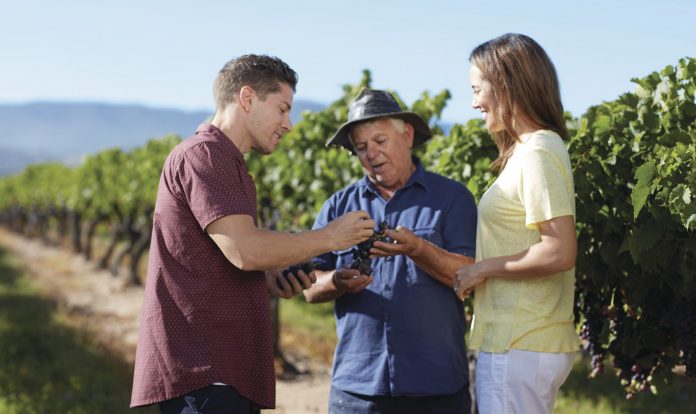They like to do things a little differently in the Granite Belt when it comes to growing grapes and making wine. And it’s paying off in spades.
The grape-growing area itself is quite small: about 56km long and 12km wide, and at present boasts 100 varieties.
But the main difference to other great winemaking regions of our nation is that the Granite Belt growers specialise in alternative and emerging varieties.
The concept is embodied in the Strange Bird movement.

Ballandean Estate Wines business manager Robyn Puglisi-Henderson told a touring group of Australian Society of Travel Writers members that the Strange Bird idea had been “amazing for the region”, with 30-40 alternative varieties now being grown.
As Queensland’s oldest family-owned and operated winery, Ballandean Estate has been producing unique wines since 1932. And Robyn said that for the past 40 years, people had been asking: ”What’s the best wine of the region?” – just as semillon, for example, is synonymous with the Hunter Valley in NSW.
“There are tens-of-thousands of grape varieties in the world,” Robyn, granddaughter of founder Alfio Puglisi, said.
“Why would you want to choose one? And we didn’t want to choose one.
“Strange Bird varieties are alternative varieties grown and made on the Granite Belt. If it is an alternative variety, it has to be less than 1% of Australia’s plantings, and then that particular wine has to be grown and made here.
“So, when people come to us now and say, ‘What do you do best on the Granite Belt?’, I will always say, ‘We hang our hat on Strange Bird’.
“The varieties are quite unique. Lots of people do them but this is the way we do them on the Granite Belt.
“We never did just concentrate on shiraz and chardonnay.”

Robyn gives the example of malbec grapes, some of which have been planted in Granite Belt paddocks since the 1980s.
The purple grape variety used in making red wine is known for being dry and full-bodied, with a rich, dark-fruit nose and flavours such as red plum and blackberry.
While merlot grows all over the world, malbec grapes are mostly grown in France and Argentina and haven’t really taken off in popularity as a single varietal.
“When we had malbec planted in the vineyards in the Eighties, we would get all that malbec and we would stick it in our port because nobody was interested,” Robyn said over lunch in the famed Barrel Room restaurant on site.
“Nobody cared about malbec.”
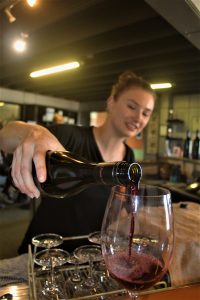
But malbec is one of the Strange Bird favoured varieties and over at Ridgemill Estate, Severnlea, for example, it joins with cabernet sauvignon and merlot to make that winery’s popular 2019 Benny’s Blend.
Similarly, saperavi – a richly coloured, high-acid wine that goes well with rich meat dishes – was planted 6-8000 years ago in Georgia (in the former Soviet Union), the oldest wine-producing country of the world. It is now found on the Granite Belt.
“Dad (Angelo Puglis, who took over the Ballandean Estate farm with wife Mary from Angelo’s parents in 1968) found saperavi about 15 years ago and decided to plant it,” Robyn said.
“It’s the richest of our reds. And what we say about it is, it has the silkiest of tannins.
“The saperavi you’re drinking (from Ballandean) is 15.6% alcohol. But it doesn’t feel like it.

“In 2015, three of the wineries on the Granite Belt sent our saperavis to the first-ever International Saperavis of the World competition in Georgia and all three of us won gold medals.
“It’s a fabulous variety and we love it here. It’s our favourite red.”
In the whites, Ballandean Estate focuses on fiano: a southern Italian variety “rich, aromatic and with beautiful flavours”.
Fiano originates from Campania, south of Rome, around Naples, and is fresh and lively with hints of spice – perfect with seafood, poultry, pork or veal.
While “mainstream” grapes such as shiraz and chardonnay are still grown in this border region, they are fast being overtaken by what Balancing Heart winemaker Mike Hayes calls “a new energy of wines”.
They include grapes such as sagrantino: a name that comes from the Italian word “sacred” and was the wine poured at the altars at religious services in Central Italy.
First grown in Umbria, the grape variety remains rare in that country and extremely rare in Australia.
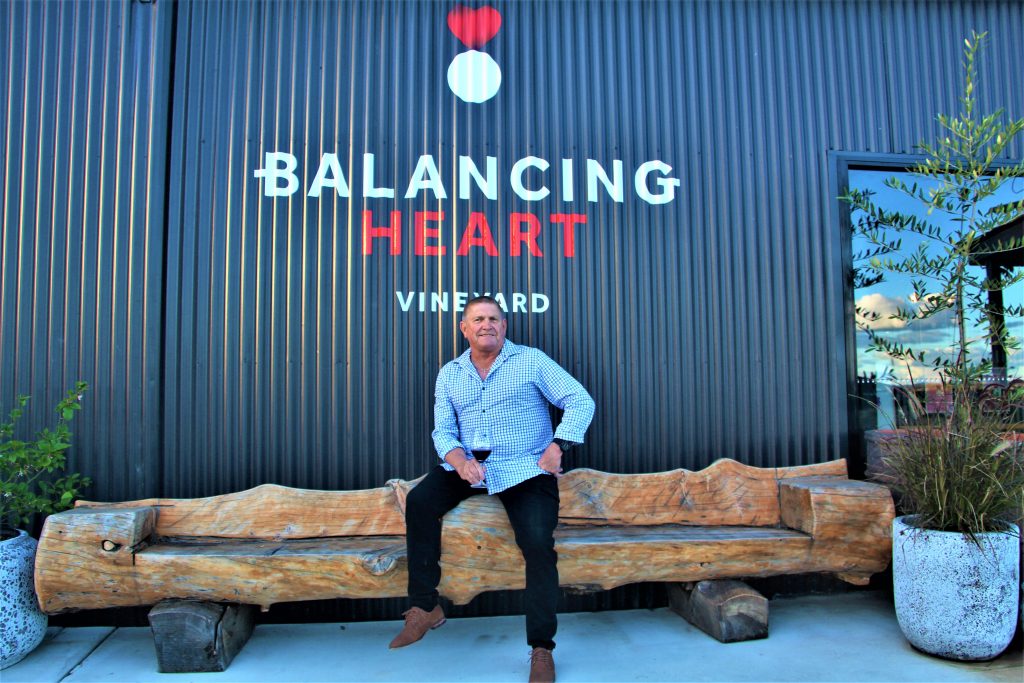
And that’s certainly something that excites the 2017 Australian Society of Viticulture and Oenology Winemaker of the Year and third-generation grape-grower.
“Italian varieties are showing prowess and are the strength of the whole district,” he said over a group wine tasting at the cellar door.
The key to great winemaking in the Granite Belt is found in the unique soils.
“The clay’s down around 1-1.2m and that’s when you hit the bedrock. What you’re looking at here is 250 million years of building,” Mike said.
“To give you some idea, the soils of Chablis in France, they’re 150 million years old. And the soils of Barossa are 200 million years old. We’ve got some of the oldest soils in Australia here.
Help keep independent and fair news coming by subscribing to our free daily news feed. All it requires is your name and email. See SUBSCRIBE at the top of this article.
“The soils are adamellite granite: a large porphyritic granite. It’s excellent because it retains the coolness down low but allows the free-draining water to get away.
“It gives the wine an acidity that just comes beautifully through the mid-palate.
“You’ll see it flowing through and holding all the flavours together. In particular, you’ll get that lovely perfumed elegance on the nose.
“This is the only vineyard in the district with sagrantino. It’s the only vineyard in the district with carmenere (from Bordeaux) as well.
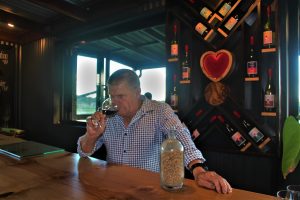
“These are more sophisticated and lighter. You have to have intelligence to drink our wines, I feel.
“They’re not just an everyday drink. It’s an encyclopedia in your mouth.”
The region’s altitude also plays an important role.
“The parameters of growing grapes is between the 30 and 50 degrees latitude. We’re slightly out of it at 28.65,” Mike said.
“Up here, you will get sophistication in wines that you’ll get nowhere else on the planet and, more importantly, climate change will benefit us.
“We have got climate change. I’m noticing that in the summers: we are getting higher humidity and we’re getting warmer temperatures at night. That’s where the Italian and Mediterranean varieties, in particular, will suit us because they’re used to that higher temperature of a night time.”

Earlier, while toasting the sunset overlooking the balancing heart rock formation that gives the vineyard its name, Mike offered us an abridged history lesson of the district.
The wine industry began in the Granite Belt in 1871 , established by Father Jerome Davadi, a Catholic priest and horticulturalist.
Italian migrants soon followed, bringing with them a tapestry of Mediterranean culture in which winemaking figured prominently.
The modern-day wine industry only started about 1969, with plantings of pinot noir, gewurztraminer, sauvignon blanc and Rhine riesling.
“The industry in 1979, when I first started, was very draconian and it was just doing what everybody in Australia was doing,” Mike said.
“We were planting about six or seven varieties and everybody was just mossying along and making cabernet, shiraz and just everything.
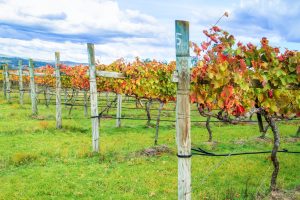
“What’s happened to now, we knew the area is small. it’s only 0.5 of 1% of the national total. And we knew that we had to be different.
“But because we weren’t restrained by different traditions – like having to grow a variety because seven generations have been made to grow it – we could let our hair down and experiment.
“Also, with our Italian culture and background, they (growers) started looking at those varieties.”
About 1990, the Granite Belt wine industry exploded, jumping from 12 wineries to 28 within two years.
The emerging grape varieties have been on the march since 1992.
“The mid-’90s, they started to take off,” Mike said.
“We introduced quite a few here. Tempranillo came here in 1999.
“The very first tempranillo grapes in Queensland were crushed at this winery in 1999 under contract. The guy who brought them here was an Hispanic bloke: Tommy Hermanus.
“We’ve got a plethora of them now. It ideally suits Italian varieties here.
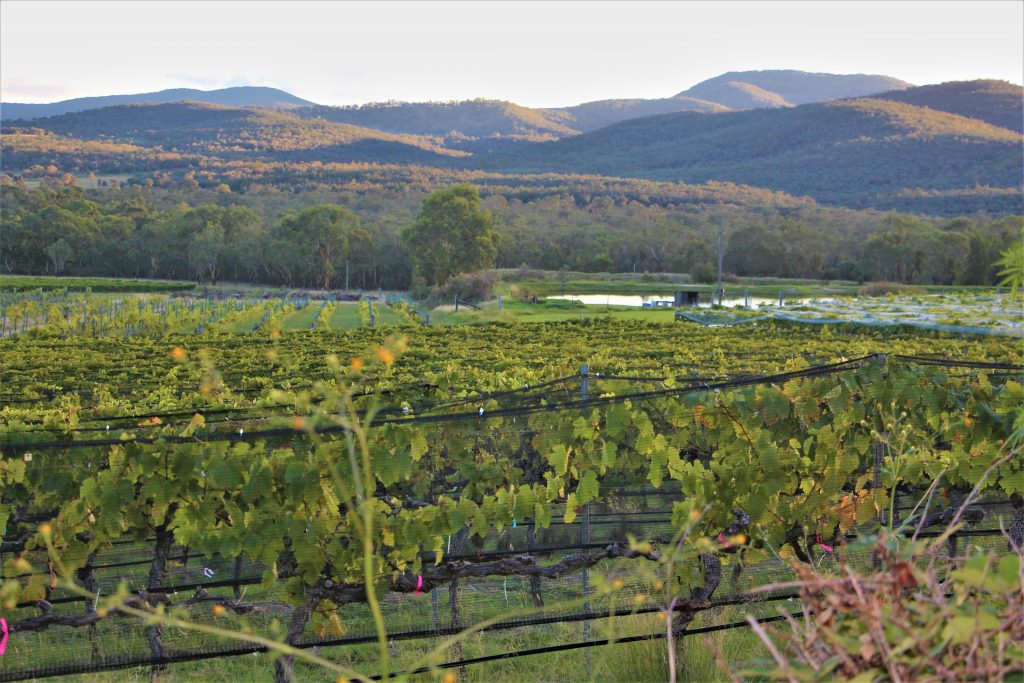
“You see the fianos, you see vermentinos, the barberas. It loves this soil; it loves the altitude. It just loves the freshness.
“We are more prone here to do Italian varieties better than, say, Spanish or Iberian varieties. I’m not saying that we can’t grow them but I think that the Italian varieties will shine a lot more and show us a lot more prowess going forward.”
Mike and winery owner Greg Kentish aim to make “wines with heart”, ensuring Mother Nature is the most important winemaker.
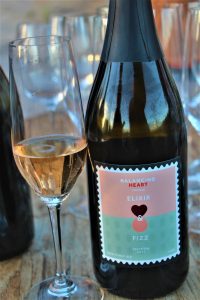
“We manage our vineyard with love and that’s what we’re all about,” Greg said.
“Like Mike says, ‘Let the vineyard do its work. You have to love your vineyard if you’re going to create great wine’. And Mike tells me that every day.
“The winemaker, of course, has a really important role. But if you don’t look after your vineyard and love it, then you won’t make great wine.”
Mike tries to be “as organic as we possibly can” in the vineyard.
“I just think everyone’s fed up with the chemicals and preservatives that give migraines,” he said.
“I got poisoned with weedicide back in 1999 and I ended up on a dialysis machine in Brisbane.
“And this doctor came to me and he just said to me: ‘You’re the luckiest bloke on the planet’.
“So I walked out of there and I said, ‘There’s got to be something better than this’.
“We’re really going to be making niche wines here and lots of small parcels and it’s an opportunity to really let ourselves get back to what I call ‘natural wines’.”
It’s hard not to be swept away with Mike’s enthusiasm for Granite Belt wines, but he isn’t just talking out of his Akubra.

He proudly announces that wine writers around the world are saying that the Granite Belt is now producing the best verdelho in the world.
And he is not afraid to make some bold predictions for the future.
“There are many writers now globally talking about the Granite Belt as in the top 5% wine-producing regions. We’re actually getting in the top three now in Australia.
Follow us on Facebook: www.facebook.com/scnews2020/
“Going forward, we know – and I’m not saying this egotistically, I’m saying this factually, and I’m saying this purposely – we are the best wine region in Australia bar none.
“We are the most exciting wine region.
“We have got the best parcels of interesting wine. We are completely different.
“And mark my words, within five to seven years, the wines here will be some of the most-prized and sought-after wines globally.”
Things to do in Stranthorpe and the Granite Belt
The Granite Belt centres on Stanthorpe, in an area of the Great Dividing Range to the south-west of Brisbane.
EAT/DRINK

- Try delights including vanilla slice with your tea orders beside the platform at historic Wallangarra Railway Station, which straddles the Queensland/NSW border. http://wallangarra-railway-station.business.site
- Enjoy a free taste test of the Stanthorpe Cheese products in the Jersey Girls Café. www.stanthorpecheese.com.au
- Have a hearty breakfast on the veranda of The Little Larder that won Delicious Local Stanthorpe’s Best Café 2021 or pick up some tasty, locally-made condiments. www.littlelarderstanthorpe.com.au
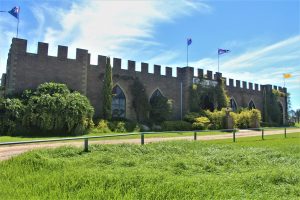
- Check out the quirky Castle Glen, Thulimbah, with its colourful array of wines, spirits, liqueurs and ports. You’ll have the chance to talk all things organic at the cellar door before perhaps stocking up on an award-winning Butterscotch Liqueur and Cabernet Sauvignon Fortress “grandfather port”. castleglenaustralia.com.au

- Indulge in a croissant or maybe a mixed berry tart, courtesy of pastrymaker extraordinaire and former Sunshine Coast lad Stephen Lambert at Zest Pastries, Stanthorpe. You can even book a pastrymaking class. http://zestpatries.business.site
- Linger under the pergola for a lazy afternoon with the family, see why the wines are world-class in a tasting or perhaps savour an exquisite dining experience in The Barrel Room at Ballandean Estate Wines. ballandeanestate.com
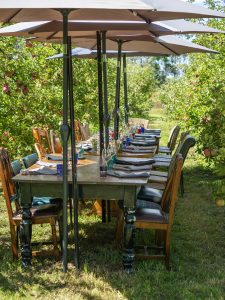
- Why not book a McMahon Bros Organics guided apple orchard tour and Orchard Experience, including lunch under market umbrellas by the Pink Lady apples. http://www.facebook.com/orchardexperience
- Stroll through the vines to the balancing heart rock formation, head to the cellar door to taste-test the unique wines produced, or sit under the fairylights by the vines for a special weekend woodfired-pizza dinner experience. www.balancingheart.com.au
PLAY
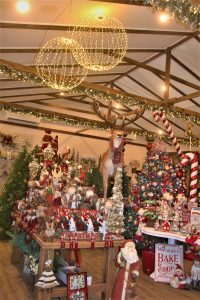
- If you’re in need of some early yuletide cheer, try Katrina and Brad Fraser’s Christmas Tree Farm.
Picnic among the pines, pat the reindeer and donkeys, grab some precious bauble decorations, and partake of nougat, chocolates and white snow at www.granitebeltchristmasfarm.com.au
- As you stroll around Stanthorpe, the “capital” of the region, don’t forget to look up, down and around the corners.
There’s a plethora of amazing and colourful public art around the town for residents and visitors to enjoy, including sculptures and large murals.
Or simply pay a visit to the Stanthorpe Regional Art Gallery where the annual Art Prize is hotly contested by creatives throughout Australia each year.
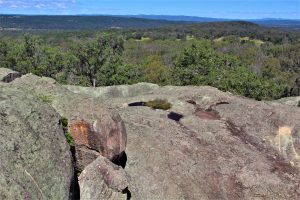
- Visit Donnelly’s Castle that Queensland bushranger Captain Thunderbolt once used as his hideout, with sweeping views and caves to uncover.
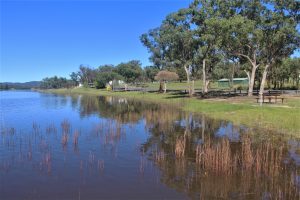
- Snap some majestic reflections at Storm King Dam and Stanthorpe’s many waterside parks. There’s plenty of picnic options with those picturesque country town and rural views.
STAY
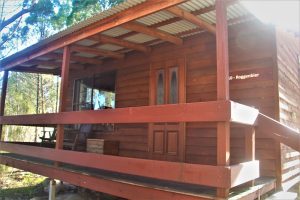
- Cabins at the Granite Belt Retreat and Brewery are only a short stumble from the tasting room and waterside back deck.
Graze on a gourmet cheese platter on the cabin veranda with a few glasses of your favourite Granite Belt Brewery beer or local wines from the mini bar before snuggling up in front of the fireplace. www.granitebeltretreat.com.au
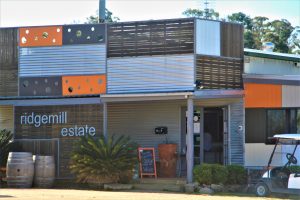
- The luxury studio cabins are only metres from the vines at Ridgemill Estate, Severnlea.
Kick back on the front patio with perhaps a bottle of 2019 Benny’s Blend (cab sauv, malbec and merlot) or 2019 Pinot Grigio and a gourmet cheese platter after an informative wine tasting at the cellar door. http://ridgemillestate.com

- Revel in the birdsong and kangaroos hopping through the scrub at Girraween Environmental Lodge.
The 10 architecturally designed bush chalets are set on 161ha of natural bushland surrounded by Girraween National Park. http://girraweenlodge.com.au


